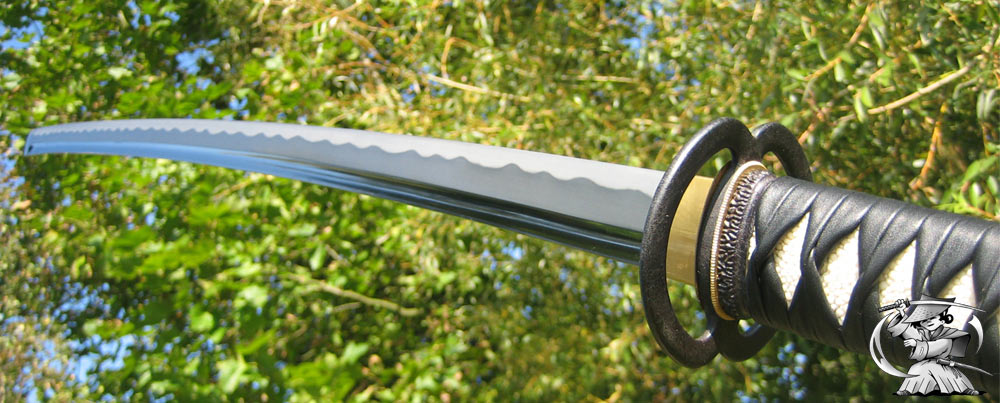“There is nothing outside of yourself that can ever enable you to get better, stronger, richer, quicker, or smarter. Everything is within. Everything exists. Seek nothing outside of yourself.”
― Miyamoto Musashi, The Book of Five Rings
Miyamoto Musashi is a name every Japanese person knows as belonging to the greatest samurai swordsman and strategist of his age. Achieving reknown at an early age, particularly gaining fame for his unique kenjutsu ‘Nito Ryu’ the wielding of two swords simultaneously. In later life he became equally acclaimed as a philosopher, poet, artist and the author of the famed text on the way of the warrior written in a Kumamoto cave shortly before his death :’五輪の書Go Rin No Sho’ ‘The Book Of Five Rings’.
Born in the village of Miyamoto in Okayama Prefecture around 1584, the son of an acclaimed swordsman. Musashi lead an itinerant lifestyle from an early age, his mother died soon after his birth and he was abandoned by his father around the age of ten. He then went to live with his uncle, a monk, in a Shoreian temple. During his time at the temple he was trained in Zen Buddhism and learnt how to read and write, he also trained intensively in the swordsmanship skills he had learnt from his father from the time he could walk.
Musashi’s ambition from a young age was to become the greatest swordsman in Japan and at the age of thirteen he took the first step by challenging an itinerant swordsman visiting his village to a duel and winning, killing him violently with his ‘bokuto’ (a wooden sword).
A few years later he left the sanctity of the temple and began his journey as a wandering warrior, travelling around the country honing his skills, fighting duels with any willing participant and becoming involved in several battles. Musashi lived at a time of great change and upheaval in Japanese history, the average lifespan of a samurai of this era was a mere twenty five years, however, despite fighting on the losing side several times Musashi survived.
“A thousand days of training to develop, ten thousand days of training to polish.”
― Miyamoto Musashi, The Book of Five Rings
Musashi went undefeated in over 60 duels. Due to his great dexterity and also instinctive knowledge of strategy, particularly in how to unsettle and use both his opponent’s weaknesses and turn his strengths against him. His final duel truly earned him the title of the greatest swordsman in all Japan when he outwitted and killed the great Sasaki Kojiro.
Sasaki Kojiro was a retainer of Lord Hosokawa the ruling family of Kumamoto. Like Musashi, Sasaki had also developed his own unique and very effective method of fighting his using a ‘no-dachi’, a very long two-handed sword. Despite the sword’s length and weight, Kojiro’s strikes with the weapon were incredibly quick and precise, he is said to have developed his method of wielding it from observing the movement of a swallow’s tail in flight.
“Know your enemy, know his sword.”
― Miyamoto Musashi, A Book of Five Rings: The Classic Guide to Strategy
Musashi and Sasaki arranged to meet on an island in the early morning to duel. Sasaki arrived on time, Musashi deliberately kept him waiting, taking his time and travelling to the island at a leisurely pace by fishing boat. On the journey he took a wooden oar and fashioned it into a long staff to fight with. By the time he strolled on to the island, Sasaki had been waiting for hours and was beside himself with anger, on seeing that Musashi held only a simple wooden staff in his hand, he was so incensed by this sign of disrespect that he took his own scabbard and threw it away.
Prompting Musashi to utter the infamous words:
“If you have no more use for your sheath, you are already dead.”
Thus provoking Sasaki to attack first, Musashi quickly countered with a blow that broke his ribs, puncturing his lungs and killing him. Musashi had intentionally fashioned his wooden staff to be several inches longer than Sasaki’s long sword.
The victory was not sweet though, realizing with sadness that one of the greatest ever swordsman had just died at his hands, he vowed to never fight another dual to the death. He was 28 years old.
In later life he adopted two sons and trained warriors in the kenjutsu skills he had developed. he also began to study the arts becoming a gifted sumi-e painter. In 1640 he became the official retainer of Hosokawa Tadatoshi the Lord of Kumamoto and was given Chiba Castle as his residence. However, in 1642 feeling that his health was failing he retreated to Reigan Cave near Kumamoto City, this is where he wrote his masterpieces Go Rin No Sho and Dokkodo (‘The Way of Walking Alone’), a week after finishing the latter he died at the age of sixty one.
![Kobokumeigekizu[1]](http://explore-kumamoto.com/wp-content/uploads/2015/06/Kobokumeigekizu1-128x300.jpg) Musashi’s legendary status is attributed to his rediscovery by Japanese author Yoshikawa Eiji, his works based on Musashi’s life were serialized in newspapers published in the mid 1930’s that went on to become best selling books. In more recent years Musashi has been immortalised in animation, manga, on film and TV. The use of The Book Of Five Rings by business leaders both in Japan and overseas who have applied the ancient samurai philosophy of warrior spirit to the competitive world of commerce mean that Musashi’s words live on:
Musashi’s legendary status is attributed to his rediscovery by Japanese author Yoshikawa Eiji, his works based on Musashi’s life were serialized in newspapers published in the mid 1930’s that went on to become best selling books. In more recent years Musashi has been immortalised in animation, manga, on film and TV. The use of The Book Of Five Rings by business leaders both in Japan and overseas who have applied the ancient samurai philosophy of warrior spirit to the competitive world of commerce mean that Musashi’s words live on:
“All man are the same except for their belief in their own selves, regardless of what others may think of them”
― Miyamoto Musashi, A Book of Five Rings: The Classic Guide to Strategy
Learn more about Miyamoto Musashi’s life and legend by booking a tour with Explore Kumamoto. Click here for details.

